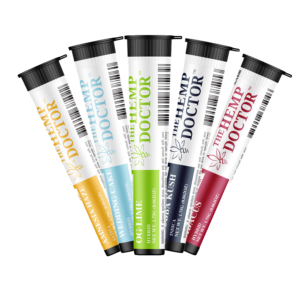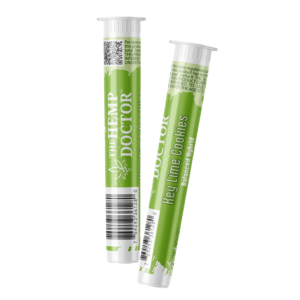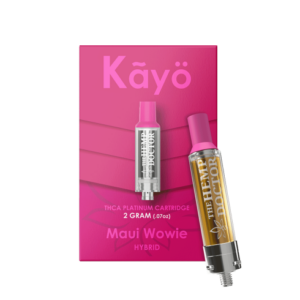Do you want to be part of the booming cannabis business in the state of Maryland (MD), poised to reach $1 billion by the end of 2024? Opening a dispensary in Maryland is not exactly a walk in the park, but with patience and the right guide, you’re one step closer to your dream of owning a Maryland-based dispensary.
We’ll walk you through the steps of applying for a recreational MD cannabis license along with the business side of things, such as budgeting and finding your cannabis suppliers.
Medical Cannabis:
Yes
Recreational Cannabis:
Yes
Hemp-Derived:
Yes
License Application:
Periodic
Understanding Maryland’s Cannabis Laws
Before understanding the process of how to open a recreational dispensary in Maryland, it’s crucial to refresh yourself on the state’s specific cannabis laws.
The State of Medical and Recreational Marijuana in Maryland
Medical marijuana is fully legal in Maryland under a comprehensive program, while adult-use cannabis legalization became effective on July 1, 2023. The state’s shift from medical marijuana to adult-use cannabis means adjusting to newer, evolving state regulations from both the Maryland Medical Cannabis Commission (MMCC) and the Maryland Cannabis Administration (MCA).
Cannabis Business Licensing in Maryland
You need to be a licensed dispensary to sell cannabis products in MD actively, and your inventory is subjected to a 9% tax.
License availability in Maryland is periodic. The state is not always open for licensing applications. The last round of licensing for cannabis businesses was in May 2024. Once open, however, MD imposes a $5,000 standard license application fee and $1,000 for a micro license.
Maryland’s cannabis laws are designed to support social equity, requiring that businesses contribute to communities affected by prior drug laws. This includes a selection process prioritizing licenses for social equity applicants and a framework to remedy the impact of the war on drugs.
Consumer Cannabis Laws in Maryland
As for the qualifying age to buy cannabis in Maryland, you may only sell adult use cannabis to individuals who are at least 21 years old. The daily maximum purchase limit per person is 1.5 ounces of cannabis flower and 12 grams of concentrates.
Entrepreneurs must navigate these requirements with careful planning and an eye for compliance, ensuring their business model aligns with state objectives for an inclusive and equitable cannabis industry.
| Related Post: Be informed on the updated maximum allowed cannabis procurement per state for medical and recreational purposes. |
Step 1: Crafting Your Business Plan
A well-structured business plan is your roadmap to success in the cannabis sector. It should define your business goals, target market, product offerings, sourcing plan, physical location, security plan, and operational strategy. It’s also an important document to submit with your licensing application.
| According to MCA, the business plan must demonstrate: “demonstrate a likelihood of success and sufficient ability and experience on the part of the applicant, and providing for appropriate employee working conditions…” |
Moreover, your business plan must also detail how you intend to navigate Maryland’s regulatory landscape, including compliance with security, diversity, and environmental policies.
Incorporating elements of your local marketing strategy and financial projections demonstrates the viability of your venture to potential investors and regulatory bodies alike. Essentially, your business plan is not just a document but a reflection of your readiness to enter the competitive cannabis market.
Step 2: Forming A Business Entity
To legitimize and give your business a name in Maryland, you must form a business entity with the state. Work with a lawyer or a professional who understands the process of forming a business entity in MD. At the very least, you need to decide on the name of your cannabis business, the owners, and the business structure.
Step 3: Budgeting the Costs
How much to open a dispensary in Maryland? Be prepared to have at least $250,000 on hand. Bigger dispensary start-up costs can reach as high as $1 million. For micro businesses, the initial capital can be less than $250,000.
Let’s look at how certain expenses add up to the average range of start-up costs.
| Annual Rough Cost of Starting and Operating A Maryland-Based Dispensary | |
| Application and Licensing Fee | $5,000 |
| Annual Licensing Fees (renewal for over five years) | $25,000 |
| Real Estate | $125,000 |
| Staff Salary | $300,000 |
| Professional Fee and Services | $50,000 |
| Hardware, Software, & Security | $50,000 |
| Inventory | $3,000,000 |
| Marketing | $100,000 |
| Grand Total: $3.6 million | |
Step 4: Securing Financing
Finding the capital to start a dispensary is one of the biggest hurdles for aspiring cannabis businessmen. Traditional financing options might be restricted due to federal regulations around cannabis, prompting entrepreneurs to explore alternative sources. Here’s a complete list of alternative funding options for starting a dispensary in MD:
- Self-funded: Funds coming from your pocket.
- Filial connections: Seeking the help of family members and friends to loan or invest in the business.
- Business partners: Many dispensaries are built through partnerships where business partners help with financial and strategic planning.
- Bank loans: Not all banks are willing to lend to cannabis businesses (especially mainstream ones). However, small and private financial institutions accept cannabis-based business loans.
- Private funds: Examples of this type of funding include angel investors, private equity options, and venture capital. You’ll get considerable funding for your business in this route, but your stake in the business will be smaller.
- Crowdfunding: You can seek public help by posting a crowdfunding project for your dispensary on platforms like Arcview Capital, Enexis, and Budbo.
- Brokers: Companies like FundCana can help fund start-up expenses, such as tools, equipment, etc.
Maryland’s unique landscape, emphasizing social equity, also opens doors for grants and loans designed specifically for cannabis businesses. Understanding the full spectrum of financing options available, including state programs like the Cannabis Business Assistance Loan/Grant Fund, is critical for securing the necessary funds to cover start-up costs, from licensing fees to store build-outs.
Step 5: Finding the Perfect Location
The location of your dispensary plays a pivotal role in its success. In Maryland, dispensaries must comply with state and local regulations regarding their proximity to schools, playgrounds, and other dispensaries.
For example, your dispensary can’t be within 1,000 feet of another dispensary. It must also not be located within 500 feet of the following places:
- Schools
- Child care centers
- Playgrounds
- Recreation centers
- Libraries
- Public parks
Finding a location that meets these regulatory requirements and effectively serves your target demographic often requires the help of real estate professionals specializing in the cannabis sector. Additionally, the chosen location should align with your business plan’s goals for foot traffic, market reach, and potential for expansion.
| Note: You don’t need to have a physical location reserved or owned right away at the time of your licensing application. However, it’s a good practice to find a commercial property already and include it in your business plan. This will be your edge over other applicants, showing the state your readiness to establish a cannabis business. |
Step 6: Licensing and Regulatory Compliance
The Maryland dispensary license process, managed by the Maryland Cannabis Administration, involves meticulous documentation and adherence to state guidelines. Before completing the actual application process, check out the list of basic MD cannabis licensing application knowledge.
- No dispensary or any cannabis business in MD operates without a license.
- Currently, the MCA only approves up to 300 dispensary licenses in the state.
- You would need to submit an application along with the following plans: a detailed operational plan, a business plan, and a diversity plan.
- You may apply for a microbusiness license if your dispensary’s capacity to offer cannabis is small compared to regular dispensaries.
- You may avail yourself of Maryland’s social equity opportunities if you’re one of those living in a proportionately impacted area.
The moment Maryland welcomes licensing applications again, here is the step-by-step process of applying for a recreational cannabis license.
- Compile all the necessary documents.
- Apply with the MCA.
- You must pay the licensing application fee ($5,000 for a regular dispensary and $1,000 for a micro business license).
- Pass a state-organized criminal background check.
- Wait for MCA’s approval of your licensing application to be communicated via email.
- Pay the licensing fee.
| Note: Applying for a medical cannabis license is a separate and different process. For reference on the complete laws on cannabis by Maryland, read this issue. |
Step 7: Designing the Layout of the Interior of Your Dispensary
Maximize positive customer experience by pre-planning the layout of your dispensary inside. Aside from design and comfort, focus on flow and practicality by smartly placing sections strategically.
Here are some things to consider in the interior layout of a dispensary:
- Complying with Maryland’s Cannabis Laws
Align your interior layout plan with Maryland’s specific requirements on security measures, signages, restricted zones, etc.
- Layouting to Promote Smooth Customer Flow
Lay out the inside of your dispensary to promote smooth customer flow from the store entrance to the payment section.
- Displaying Products in an Enticing But Compliant Manner
Strategically display cannabis items to encourage sales and inform customers about their nature but remain within the packaging and labeling cannabis rules.
- Installing a Waiting Area
To improve guests’ comfort, install a waiting or queueing area inside the dispensary with plush seats, digital displays, etc.
- Setting a Consultation Area
Add a consultation area or room where customers can privately ask a budtender for help about the most suitable choice for their preferred effects, consumption methods, etc.
- Imposing Security and Safety Measures
The dispensary layout should include spots for surveillance cameras, alarm systems, fire exit plans, restricted areas, etc.
- Designing The Interior Layout to Cater to Accessibility and Comfortability
Plan an interior layout that ensures public spaces such as waiting areas and cashier sections are accessible to customers with disabilities or mobility limitations.
Step 8: Building Your Dream Team
Your staff represents your dispensary’s face, reinforcing your brand and ensuring customer satisfaction. Each member plays a role in your operation, from knowledgeable budtenders to meticulous compliance officers.
Investing in training programs will ensure that your staff is adept at sales and deeply versed in compliance and safety protocols, which are key to navigating Maryland’s strict regulatory environment.
Fostering a workplace culture rooted in customer service and community engagement will enhance your dispensary’s reputation and customer loyalty.
Step 9: Sourcing Quality Suppliers
The quality of your inventory directly impacts your dispensary’s reputation. Thus, it is crucial to form relationships with reputable cultivators and manufacturers who share your commitment to quality, safety, and compliance.
In Maryland, dispensaries must ensure that their product lines meet the state’s rigorous testing standards, necessitating a transparent partnership with suppliers about their cultivation and manufacturing processes.
Prioritizing suppliers who align with your business values strengthens your supply chain and builds customer trust.
Step 10: Marketing Your Dispensary
A comprehensive marketing strategy is essential for carving out your niche within Maryland’s competitive cannabis market.
Your marketing efforts should focus on branding, engaging with the community, and educating potential customers about your products and their benefits.
While adhering to Maryland’s advertising regulations, leverage social media networks, content marketing, and community events to increase your dispensary’s visibility and attract customers.
Remember, transparency and compliance with advertising guidelines will safeguard your business and promote a positive image of your dispensary.
Step 11: Grand Opening Preparations
The lead-up to your dispensary’s grand opening is critical for ensuring that all aspects of your business are aligned and ready for customers. This includes finalizing your product lineup, training your staff, securing your inventory, and confirming that all your operational workflows are in place.
Engaging with the community through pre-launch events or media coverage can build anticipation and draw a crowd on opening day. A successful launch marks the start of your sales and sets the tone for your dispensary’s reputation moving forward.
Final Thoughts: Maintaining Compliance and Thriving
The journey doesn’t end with opening your dispensary. Ongoing success in Maryland’s cannabis market demands diligence in compliance, quality assurance, and customer service. Continuous education on cannabis laws, consumer trends, and product innovation will help your dispensary adapt and thrive.
Need help with inventory? Go with a trusted wholesale supplier of hemp and cannabis—The Hemp Doctor Wholesale. We offer white-label services for those who like customizing items and branded deals from our own throve of hemp delights. Schedule a wholesale consultation with our sales representative and witness your business take off.
FAQS
How much will it cost to open a dispensary in Maryland?
You need at least $250,000 to afford setting up a dispensary and applying for a license in Maryland.
Can I own a dispensary in Maryland?
Yes, as long as you can secure a license to operate one.
How much do dispensaries make in Maryland?
Maryland has no statistics on the exact sales dispensary owners make in the state, but on average, a US-based dispensary produces $2 million in sales annually with a 12% profit margin.
What state is it easiest to open a dispensary?
Colorado, Oregon, and California, but watch out for steep competition.







